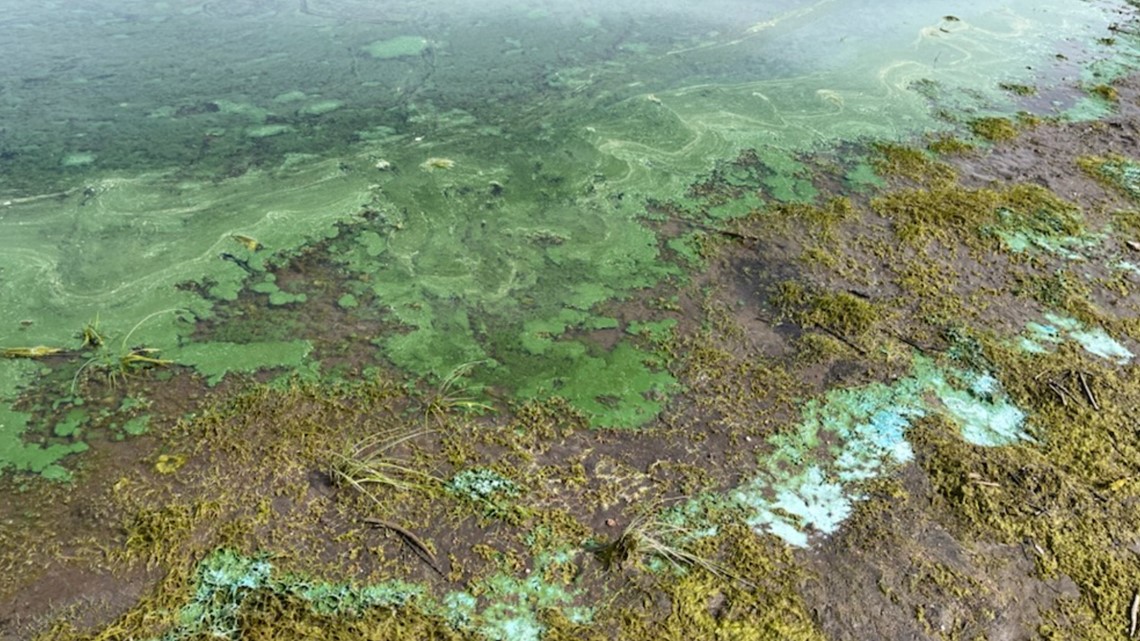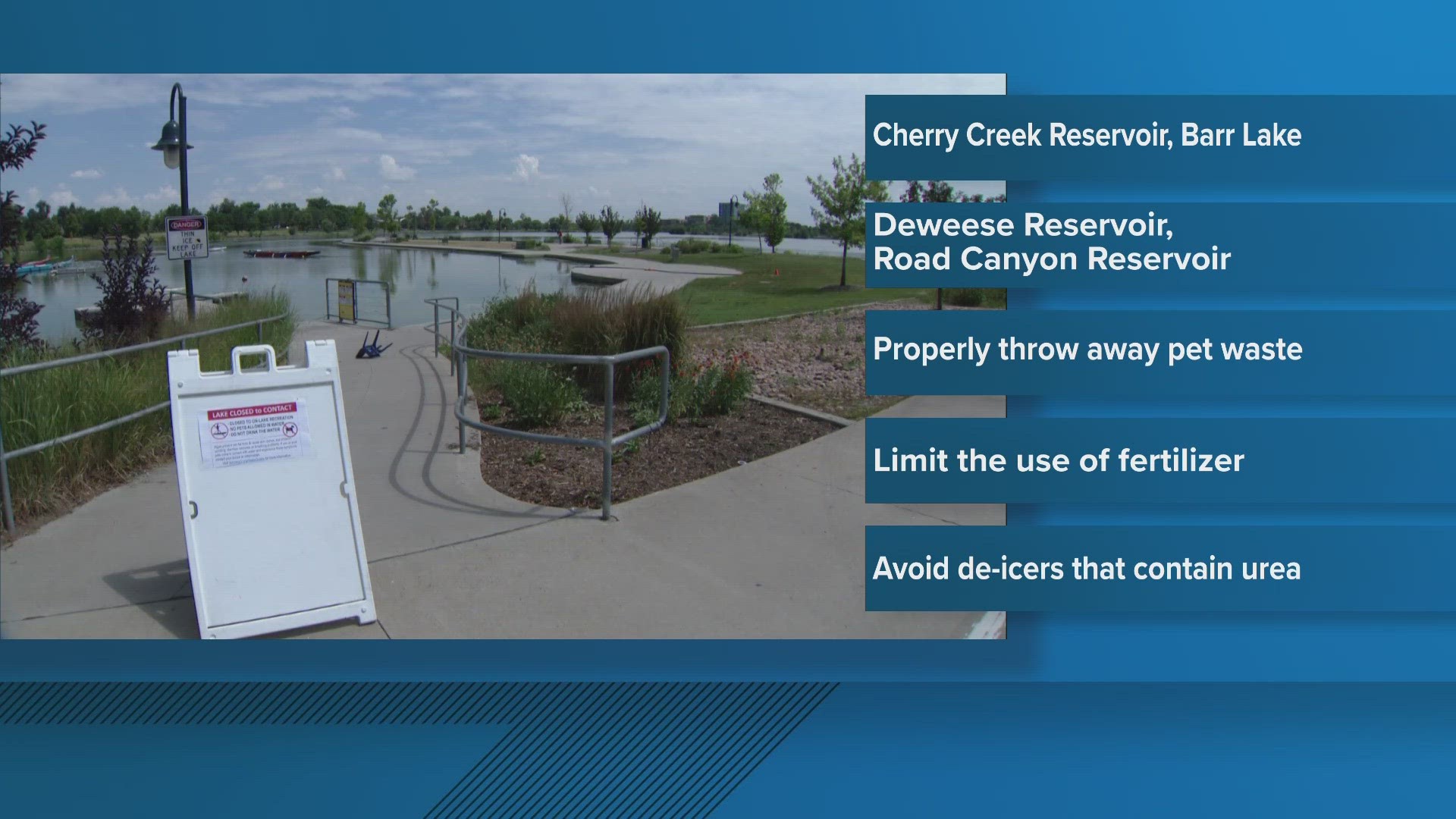COLORADO, USA —
On Tuesday, the Colorado Department of Public Health and Environment warned people about the presence of toxic algae blooms in bodies of water such as lakes and reservoirs.
Toxic algae -- also known as cyanobacteria or blue-green algae -- are microscopic organisms that occur naturally and have the potential to be dangerous.
"If these algae overgrow, bloom, or produce poisons, they can cause various symptoms in people that go into the water, including skin irritation, diarrhea, stomach pain, fever, headache, and a sore throat," CDPHE said. "This toxic algae can also kill pets, such as dogs."
According to the department's online dashboard for toxic algae, four bodies of water are confirmed to have toxic algae and eight have had reports of a potential bloom.
Barr Lake, Cherry Creek Reservoir, DeWeese Reservoir and Road Canyon Reservoir have "warning" labels, meaning that "toxins were detected at high levels" and should be avoided.
The following locations have a "caution" label, which means potential blooms were reported:
Stagecoach Reservoir
Jackson Reservoir
Vega Reservoir
Blue Heron Lake, St. Vrain State Park
Beaver Creek Reservoir
La Jara Reservoir
North Sterling Reservoir
Jumbo Reservoir (Julesburg)


CDPHE said the information on the dashboard is based on data collected from lake managers' reports of toxic algae.
People can contribute to the prevention of toxic algae by properly disposing of pet waste, limiting the use of fertilizer and avoiding de-icers that contain urea, said the department. CDPHE said doing these things decreases the amount of nutrients that go into waterways, which helps reduce the quantity of toxic algae blooms.
In addition to excess nutrients, high temperatures and standing or slow-moving water were also listed as things that allow for toxic algae growth.
Here are CDPHE's tips on how to tell if an algae bloom is harmful:
If it resembles thick pea soup or spilled paint on the water.
If it looks discolored (generally green, red, gold or turquoise but typically not stringy or mustard yellow--the latter is probably pollen).
If it has foam, scum or algae mats.
Additional information on toxic algae can be found on the department's toxic algae webpage.
SUGGESTED VIDEOS: Latest from 9NEWS

